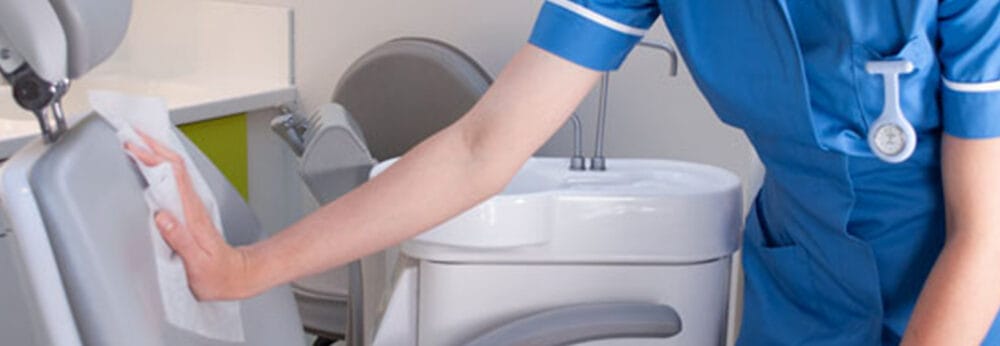Posts Tagged ‘QAC’
An assessment of early onset surface damage from disinfectant exposure in healthcare settings
The prospect of surface damage related to material compatibility is a concern when planning hospital disinfection protocols. Evidence in this sphere is limited, so it’s good to see this study published in ARIC, illustrating the potential for surface damage for some combinations of disinfectants and surface materials. Six different surface materials were included (including plastic, metal, and…
Read MoreMicrofibre and water isn’t magical
There’s a word on the street that microfibre combined with water is suitable for all cleaning challenges. But a study from Prof Jean-Yves Maillard’s lab in Cardiff suggests that water and microfibre alone achieves only a moderate removal of bacteria from surfaces and readily transfers bacteria between surfaces. Adding disinfectants to microfibre enhances their efficacy considerably. The…
Read MoreWhat’s going on with surface disinfection in dental settings?
An interesting new article reviews the history and state-of-the-art for surface disinfection in dentistry settings. Historically, aerosols and sprays were the most common approaches to the delivery of disinfectants in dentistry. However, due to occupational exposure concerns, disinfectant wipes are quickly becoming the most common method for surface disinfection in dental settings. The article spans space and…
Read MoreFurther evidence that UV room decontamination reduces transmission in hospitals
A study published in the Lancet Infectious Diseases provides further evidence that UV room decontamination reduces transmission in hospitals. The multicentre cluster-randomised study showed that introducing UV room decontamination for selected patient rooms resulted in a hospital-wide reduction in C. difficile and VRE acquisition compared with standard methods of decontamination. This is a companion article to the BETR-D study that was…
Read MoreTime to disinfect the loo before flushing?
A fascinating new study in AJIC suggests that adding a disinfectant to the toilet bowl before flushing results in a significant reduction in viral contamination of a bathroom. Does this mean we should disinfect the loo before flushing it? The study used MS2 coliphage as a proxy marker of pathogenic virus contamination. The degree of…
Read MoreQuats vs. hydrogen peroxide vs. VRE
A Dutch laboratory evaluation of four different disinfectant applied by either spraying or wiping has found that most are effective against key hospital pathogens. However, the hydrogen peroxide spray was ineffective against VRE, suggesting a problem with hydrogen peroxide stability. The study tested the ability of a hydrogen peroxide solution (branded a sporicidal), QAC, alcohol, and glucoprotamin…
Read MoreCould a daily squirt of quat improve hospital hygiene?
A study from China has evaluated the impact of a daily spray of a QAC polymer as an adjunct to wiping with bleach. The study was performed on a ward with some MRSA-positive and MRSA-negative. The study design was neat, with bed spaces sampled at 0800 and 1200, with or without the application of the QAC polymer…
Read More




